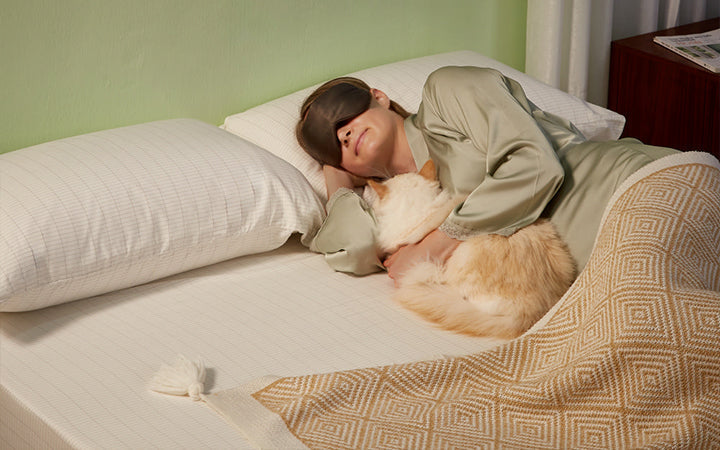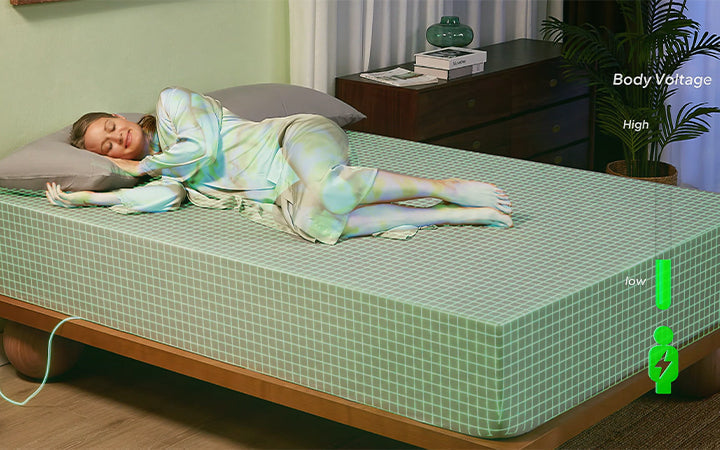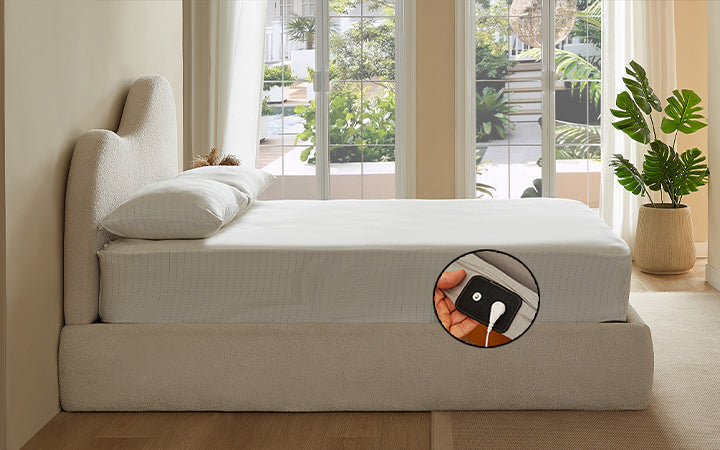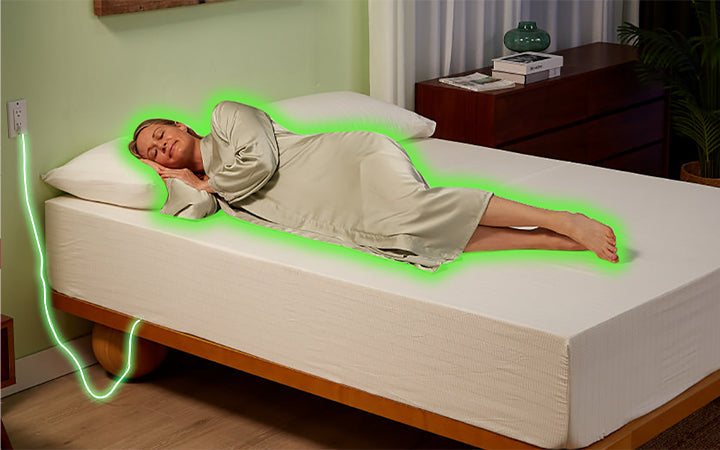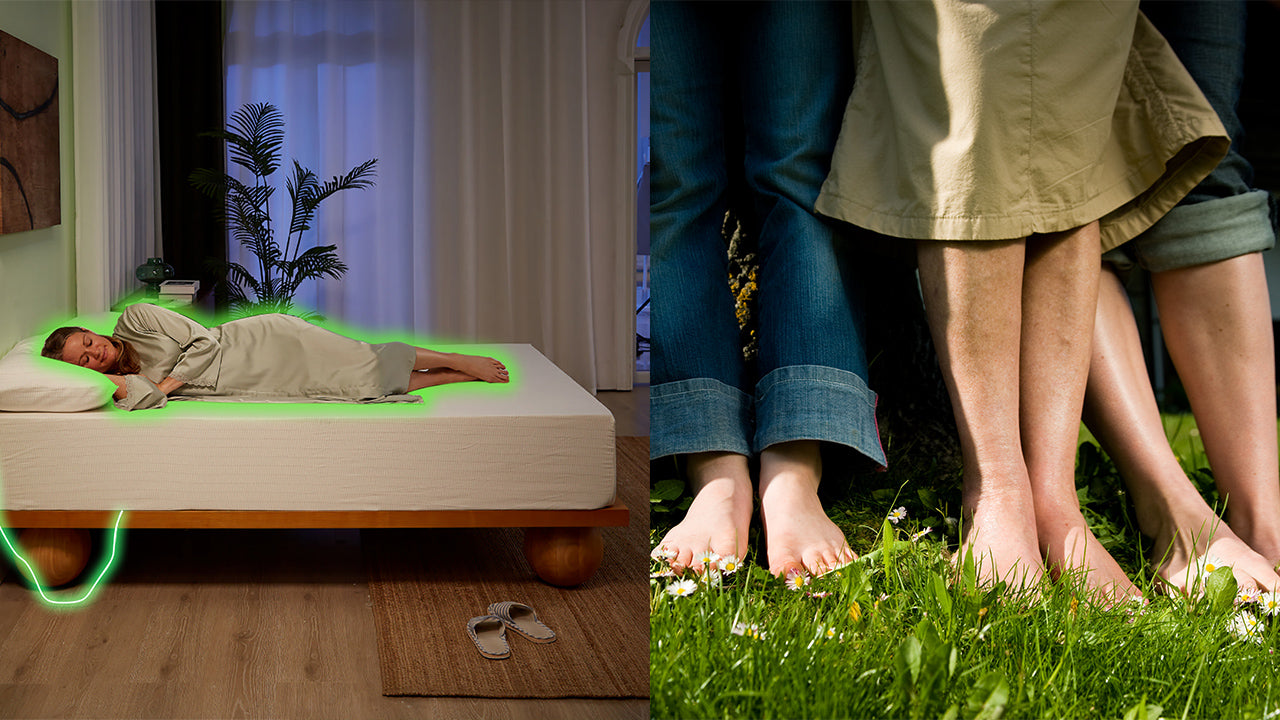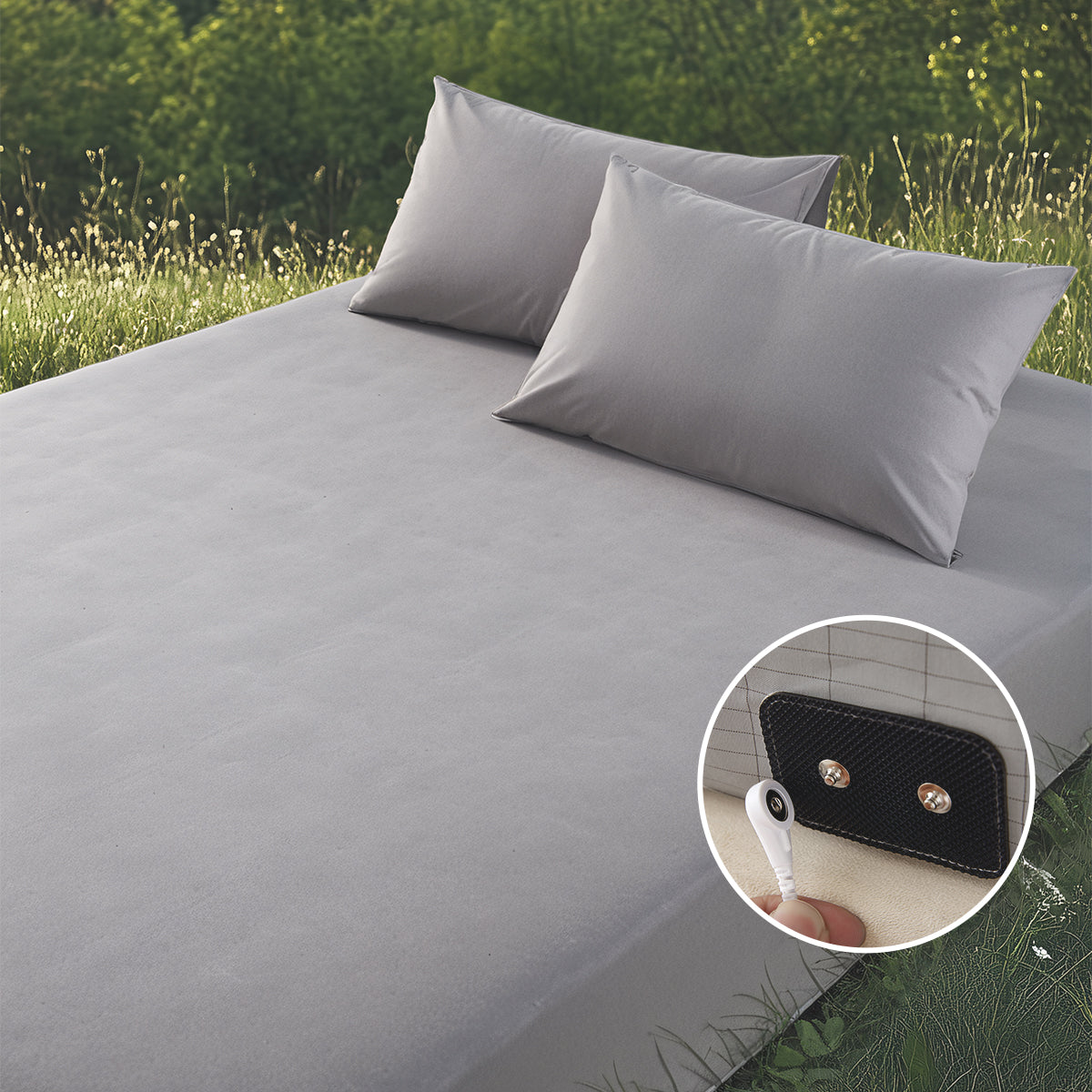How Does the Material of Grounding Sheets Affect Their Effectiveness
The effectiveness of a grounding sheet hinges primarily on its material composition. These specialized bedding products rely on conductive threads to create an electrical connection between your body and the Earth's surface charge. The specific conductive materials used—whether silver, carbon, stainless steel, or copper—determine the sheet's conductivity efficiency, durability, comfort, and maintenance requirements.

Grounding and Material Conductivity
Before we get into specific materials, let's briefly cover what grounding is and why the materials in a sheet are so important for it to work.
What is Grounding?
Grounding, or earthing, is the practice of connecting your body to the Earth's natural electrical charge. The idea is that direct contact with the Earth can help balance your body's electrical state. We often wear shoes with rubber soles and live indoors, which insulates us from this direct contact. Grounding sheets are designed to provide this connection conveniently while you sleep or rest. They create a conductive path between your body and a ground source, typically a grounded electrical outlet.
Why Conductive Materials are Necessary
For a grounding sheet to do its job, it needs to be made with materials that can conduct electricity. These materials act as a bridge for electrons to flow from the ground source, through a wire, into the sheet, and then to your body when you touch it. If the material isn't conductive enough, the sheet won't be able to establish that grounding connection effectively.

How Conductivity is Measured
A material's ability to conduct electricity is related to its electrical resistance, which is measured in Ohms (Ω). Lower resistance means better conductivity, as it allows electrons to flow more easily. So, for a grounding sheet to work well, its conductive parts need to have low electrical resistance. This allows for a more efficient connection between your body and the Earth.

Material-Related Factors for Grounding Sheet Efficacy and Practicality
The efficacy and day-to-day practicality of a grounding sheet are significantly influenced by several critical factors related to its conductive materials and overall design.
1. Conductivity Level
Different materials naturally conduct electricity better than others. Silver, for instance, is known for being highly conductive, more so than materials like carbon or stainless steel. A material with higher conductivity can more efficiently help your body reach the same electrical potential as the Earth. This doesn't mean materials with lower conductivity don't work, but they might need to be used differently in the sheet's design, perhaps with more conductive threads, to achieve a similar effect.
2. Durability
A grounding sheet needs to last and maintain its conductivity over time. Two main things affect this:
- Resistance to Chemical Changes (like Oxidation): Some metals react with substances like oxygen or sulfur in the air or from our bodies. This can cause things like tarnishing on silver or corrosion on copper. While slight tarnish on silver might not completely stop conductivity (silver sulfide, the tarnish, is still somewhat conductive), heavy buildup can reduce the sheet’s effectiveness. Materials like stainless steel or carbon are generally more resistant to these changes.
- Resistance to Physical Wear: Grounding sheets are used daily, so they need to withstand rubbing, folding, and body movement during sleep. The conductive threads also need to hold up to regular washing. If the conductive fibers break or degrade, the sheet won't work as well.
3. Skin Contact and Conductive Surface
For the grounding effect to occur, your skin needs to be in direct contact with the conductive parts of the sheet. The design of the sheet plays a role here. Sheets with a higher percentage of conductive material on the surface, or a weave pattern that distributes the conductive threads effectively (like a grid), offer more chances for skin contact.
4. Material Texture and Breathability
No matter how well a sheet conducts, if it's uncomfortable, you won't use it regularly. The materials shouldn't cause skin irritation or allergic reactions. The texture is also important; if the conductive threads make the sheet feel scratchy, it can interfere with sleep. Manufacturers often blend conductive fibers with soft base fabrics like cotton to improve comfort. GroundingTime cleverly weaves silver fibers directly into the bamboo fibers, ensuring effective grounding while maintaining breathability and comfort.
5. Material Resilience in Care
Like any bedding, grounding sheets need regular washing. The conductive material must be able to handle this without losing its ability to conduct electricity. It's also important to know if common things like body lotions, oils, sweat, or certain detergents can damage the conductive fibers or reduce their effectiveness.

Common Conductive Materials in Grounding Sheets
Manufacturers typically use a few main types of conductive materials. Each has its pros and cons.
Silver
Silver is one of the best conductors of electricity. It also has natural antimicrobial properties, which can help keep the sheet cleaner.
Pros: Its high conductivity allows for very efficient grounding. The antimicrobial quality is a nice bonus for bedding.
Cons: Silver is expensive, so these sheets tend to cost more. Silver can tarnish when exposed to sulfur (from the air or skin oils). As mentioned, this tarnish (silver sulfide) is still somewhat conductive, but heavy tarnish can be an issue and affect appearance. Silver threads can also be damaged by harsh chemicals like bleach or some body products, so careful washing is needed.
Carbon
Carbon, often used as carbon-infused fibers, offers good conductivity. It's also durable, lightweight, and generally more affordable than silver.
Pros: Carbon provides a good mix of conductivity and durability. It’s often more resistant to chemicals and oils than silver.
Cons: Carbon is generally not as conductive as silver. This means a carbon-based sheet might need more conductive fibers or a denser weave to achieve a grounding effect similar to a silver sheet.
Stainless Steel Filaments
Fine filaments of stainless steel woven into fabric also offer good conductivity. The main benefits are its excellent durability and high resistance to rust and corrosion.
Pros: Sheets with stainless steel filaments are very durable and hold their conductivity well over time and through many washes. This makes them a robust choice.
Cons: In the past, stainless steel threads could feel a bit stiff. However, modern manufacturing uses very fine microfilaments, which has made these sheets much softer and more comfortable.
Copper
Copper is a very good conductor and is relatively inexpensive.
Pros: It's highly efficient at conducting electricity.
Cons: Copper oxidizes (tarnishes or turns green) easily, and this oxidized layer doesn't conduct well and can stain fabrics. Some people can also have skin reactions to copper. Because of these issues, especially the oxidation which, as we discussed under durability, reduces effectiveness, copper isn't commonly used directly in the fabric of grounding sheets for sleeping. You might see it in connecting wires or some types of grounding mats.
How Do Material Types Impact Sheet Practicality and Durability?
The conductive material in a grounding sheet greatly affects its lifespan and consistent performance. Materials that better resist physical wear, oxidation, and regular washing, like stainless steel or quality carbon fibers, generally last longer. This durability means more reliable grounding, as the sheet is less prone to tarnish or fiber breakage that can reduce its effectiveness, extend the replacement period of grounding sheets.
Material choice also affects the sheet's price: silver is usually most expensive, stainless steel mid-range, and carbon more budget-friendly. However, regardless of conductivity or cost, user experience is key. Comfort, influenced by both conductive and base materials, and ease of care are vital. An uncomfortable or hard-to-care-for sheet won't be used regularly, which limits its actual benefits in daily use.
Look for Quality Materials in Your Next Grounding Sheet!
The material in your grounding sheet determines how well it works and how long it lasts. Silver provides excellent conductivity with antimicrobial benefits but costs more and needs careful maintenance. Carbon balances good conductivity with chemical resistance at a moderate price. Stainless steel offers outstanding durability while maintaining reliable conductivity through many washes. When buying a grounding sheet, consider both the conductive material's properties and its comfort—even the most conductive sheet provides no benefit if it's too uncomfortable to use regularly.
FAQs about Material of Grounding Sheets
Q: How do materials impact a grounding sheet's effectiveness?
A: A grounding sheet's effectiveness relies on its conductive materials like silver or carbon. These materials create an electrical path to the Earth, with lower resistance meaning better conductivity.
Q: Which material is best for sensitive skin or hot sleepers?
A: For sensitive skin or hot sleepers, seek grounding sheets that offer both comfort and breathability. GroundingTime's bamboo fiber grounding fitted sheets offer excellent breathability and comfort, with silver woven directly into the bamboo fibers to ensure effective grounding.

Q: What are the pros and cons of common conductive materials?
A: Silver is highly conductive but costly and can tarnish. Carbon balances conductivity and durability. Stainless steel is very durable but was historically stiffer. Copper conducts well but oxidizes easily.
Q: How does durability affect a grounding sheet's performance?
A: Durable materials resist physical wear and oxidation from chemicals or sweat. This ensures the conductive fibers remain intact and the sheet maintains its ability to ground you over time and many washes.
